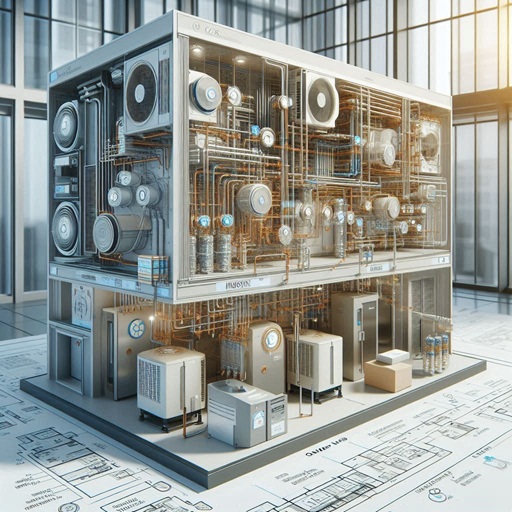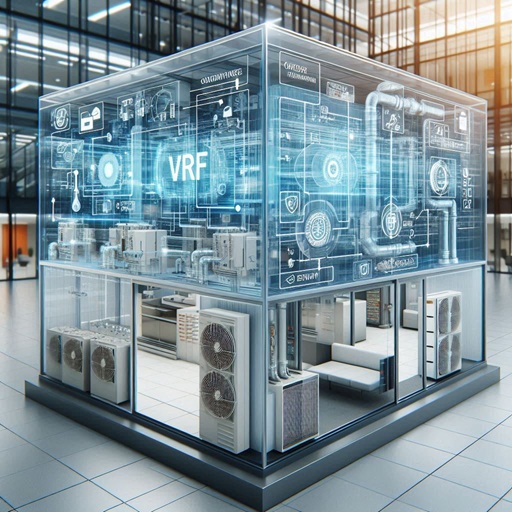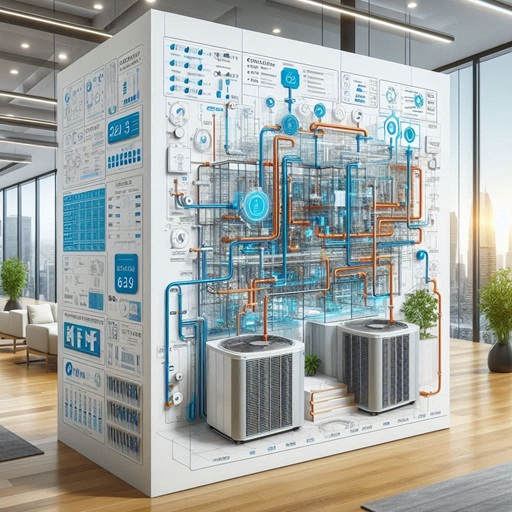The US VRF (Variable Refrigerant Flow) System Market has witnessed significant growth in recent years due to increasing demand for energy-efficient HVAC solutions. VRF systems are widely adopted in commercial, residential, and industrial sectors due to their ability to provide precise temperature control, reduced energy consumption, and flexible installation.
Key Drivers of the US VRF System Market Growth
One of the primary factors fueling the US VRF System Market is the growing emphasis on energy efficiency. Government initiatives such as the Energy Policy Act and LEED certification encourage the adoption of VRF systems in buildings. Additionally, the increasing construction of smart buildings and green infrastructure has boosted demand for advanced HVAC solutions. The US VRF System Market is also benefiting from the retrofitting of older buildings with modern, energy-efficient systems.
Another significant driver is the rising demand for zoning capabilities in HVAC systems. VRF technology allows different areas within a building to be cooled or heated independently, enhancing comfort and reducing energy wastage. This feature is particularly valuable in commercial spaces such as offices, hotels, and healthcare facilities, where varying temperature requirements exist.
The global VRF system market was valued at approximately USD 14.5 billion in 2024 and is projected to reach around USD 24.7 billion by 2030, with a CAGR of 9.6% during the forecast period. This growth is driven by advancements in HVAC technology, increasing demand for energy-efficient solutions in various industries, and the need for flexible and efficient climate control systems.
Emerging Trends in the US VRF System Market
Adoption of Low-GWP Refrigerants
Environmental concerns are pushing manufacturers to develop VRF systems using low-global warming potential (GWP) refrigerants like R-32. These refrigerants comply with EPA regulations and reduce the carbon footprint of HVAC systems.
Integration with Renewable Energy Sources
Solar-powered VRF systems are gaining attention as businesses and homeowners seek to reduce reliance on grid electricity. Hybrid systems combining VRF technology with solar panels are expected to become more prevalent.
Growth of Smart and Connected VRF Systems
The rise of smart buildings is driving demand for connected VRF systems that can be controlled via mobile apps and integrated with building automation systems (BAS). These systems offer real-time monitoring, energy usage analytics, and predictive maintenance capabilities.
Market Segmentation in the US VRF System Market
The US VRF System Market can be segmented based on system type, component, application, and region.
By System Type
The market is divided into heat pump systems and heat recovery systems. Heat pump systems are widely used in residential and small commercial buildings, while heat recovery systems are preferred in large commercial and industrial applications due to their ability to simultaneously heat and cool different zones.
By Component
Key components of the US VRF System Market include outdoor units, indoor units, and control systems. The outdoor units segment holds the largest market share due to their critical role in refrigerant flow regulation.
By Application
The US VRF System Market is categorized into residential, commercial, and industrial applications. The commercial sector dominates the market, driven by high demand in office buildings, retail spaces, and hospitality industries.
By Region
The US VRF System Market is analyzed across key regions such as the Northeast, Midwest, South, and West. The West Coast, particularly California, leads the market due to strict energy efficiency regulations and high adoption of green building technologies.
Challenges Facing the US VRF System Market
Despite its growth, the US VRF System Market faces several challenges. High installation and maintenance costs can deter small and medium-sized enterprises from adopting VRF systems. Additionally, the complexity of installation requires skilled technicians, which can increase operational expenses.
Another challenge is the competition from traditional HVAC systems, which are still preferred in some regions due to lower upfront costs. However, the long-term energy savings offered by VRF systems are expected to outweigh these concerns over time.
Technological Advancements in the US VRF System Market
Innovation plays a crucial role in the expansion of the US VRF System Market. Manufacturers are integrating IoT and AI-based controls to enhance system efficiency and user convenience. Smart VRF systems can now be monitored and controlled remotely via smartphones, improving energy management.
Furthermore, advancements in refrigerant technology, such as the use of R-32 and other low-GWP (Global Warming Potential) refrigerants, are making VRF systems more environmentally friendly. These developments align with the US government’s push toward reducing carbon emissions.
Key Players in the US VRF System Market
The US VRF System Market is highly competitive, with major players including:
- Daikin Industries
- Mitsubishi Electric
- LG Electronics
- Fujitsu General
- Toshiba Carrier
These companies are focusing on product innovation, strategic partnerships, and mergers to strengthen their market position. For instance, Daikin’s acquisition of Goodman Manufacturing has expanded its footprint in the US market.
Future Outlook of the US VRF System Market
The US VRF System Market is expected to grow significantly in the coming years, driven by increasing urbanization, smart city projects, and rising demand for sustainable HVAC solutions. Government incentives for energy-efficient buildings will further accelerate market growth.
By 2030, the US VRF System Market is projected to reach new heights, with heat recovery systems gaining traction in large commercial applications. The integration of renewable energy sources, such as solar-powered VRF systems, will also contribute to market expansion.
The US VRF System Market is poised for substantial growth, supported by energy efficiency trends, technological advancements, and increasing demand from commercial and residential sectors. While challenges such as high costs exist, long-term benefits and government support will continue to drive adoption. Stakeholders in the US VRF System Market must focus on innovation and sustainability to capitalize on emerging opportunities.
FAQs on the US VRF System Market
1. What is driving the growth of the US VRF System Market?
The growth is driven by energy efficiency regulations, increasing demand for zoning capabilities, and the rise of green buildings.
2. Which sector dominates the US VRF System Market?
The commercial sector holds the largest share due to high adoption in offices, hotels, and retail spaces.
3. What are the challenges in the US VRF System Market?
High installation costs and the need for skilled technicians are major challenges.
4. Which region leads in the US VRF System Market?
The West Coast, particularly California, is the leading region due to strict energy efficiency norms.
5. How is technology impacting the US VRF System Market?
IoT integration, smart controls, and eco-friendly refrigerants are key technological advancements.



